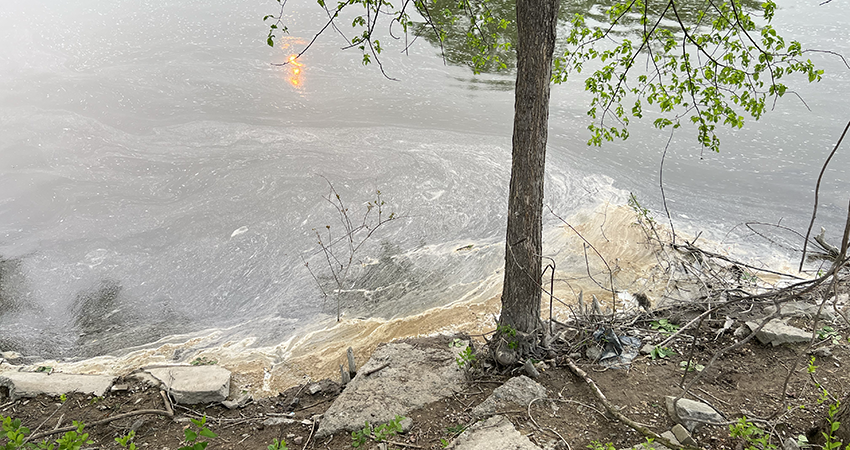Dutch research institute Wetsus patents PFAS removal technology

-
 Fergal MacErlean
Fergal MacErlean
Share article:
Water boards across Europe have welcomed a revolutionary method to remove and neutralize PFAS. Researchers at the Dutch water technology institute Wetsus in Leeuwarden appear to have become the first team to achieve a promising method to remove and neutralize most per- and polyfluoroalkyl substances — the extremely persistent man-made chemicals used in thousands of products such as non-stick pans, packing materials for food, paints, and biocides, which pose a risk to human health and the environment.
Dubbed ‘forever chemicals’, this large group of fluor containing organic chemicals will be strictly monitored following the adoption of the Urban Waste Water Treatment Directive by the European Parliament, with a large majority of votes, on 10 April. The Members of Parliament approved the deal on the new rules reached with the European Council on the new wastewater rules with 481 votes in favour, 79 against and 26 abstentions; the European Council must formally approve the agreement before it can enter into force. The publication of the new rules is expected this autumn.
PFAS-ban
In addition, the Netherlands, Scandinavian countries, and Germany have submitted a proposal to the European Commission for a ban on PFAS. A counterproposal may be lodged within a year. However, even if a ban is given the go ahead, it would take some two years to come into effect. And, production of PFAS — a worldwide problem — could countinue in the EU until 2040, until an alternative is found.
Ring-shaped adsorbent
Jan Post, programme director at Wetsus, and researcher Amanda Larasati said that their method uses a patented ring-shaped molecule to which the PFAS bind. A secret compound is added that breaks down the toxic chemicals. Their research was published in the German journal Angewandte Chemie. Post said: “Everyone knows the problem of PFAS in water. Those compounds need to get out. And it is very promising then to see a method that seems to have 70 times more capacity than existing techniques.” The ring-shaped molecule developed at Wageningen University & Research attracts more PFAS than originally thought and can also be used ten times. Larasati said: “Originally, the idea was that the molecule could bind PFAS to itself inside the ring. But the PFAS is attracted to the outside of the ring and PFAS attracts PFAS, so more and more PFAS stick to the molecule.”
Scaling up technology
Wetsus plans to further develop the innovation in collaboration with the universities of Wageningen, Twente and Eindhoven and with support from the country’s eastern water boards. Post said: “We are convinced of the potential and the principle. With an innovation like this, it comes down to scaling up. That’s always a step in the process that can cause surprises, for example when producing the required molecules on a larger scale.”
Market introduction may take years
Innovation Origins wrote that while the Wetsus research is promising, it may take up to ten years before it is ready for market introduction. The European platform added that the team plan to meanwhile treat incinerator sludge to help reduce the levels of PFAS in the environment.
Breaking down PFAS
In 2022, Science magazine ran an article on the successful breakdown of PFAS. The authors used dimethylsulfoxide (DMSO) as a solvent, adding just sodium hydroxide and heated the mixture. But this method only breaks down the longer chain — the shorter ones, which are often the most problematic ones, remain largely intact. Moreover, results were obtained in concentrated solutions, while in the real world the problem exists in very diluted solutions.
Alternative technologies
Bio Based Press reported Jacob de Boer, professor emeritus in environmental chemistry and toxicology at the Vrije University of Amsterdam as saying that he expects ‘several technologies to exist alongside each other’. The expert on PFAS, a proponent of a ban on the compounds, said: “Chemistry is very creative indeed. There is bound to be an alternative out there.”
















